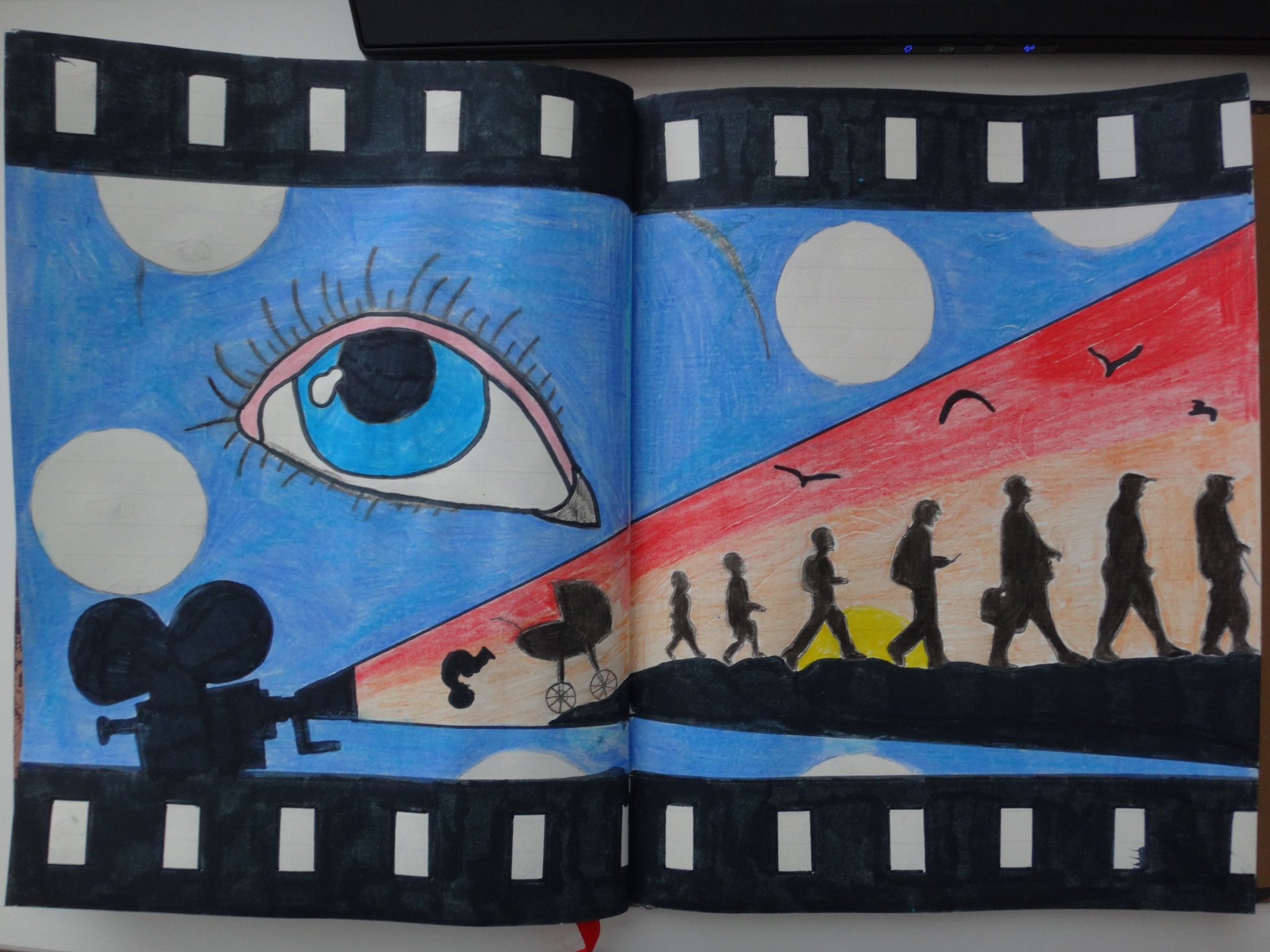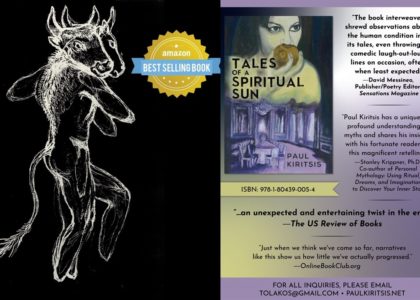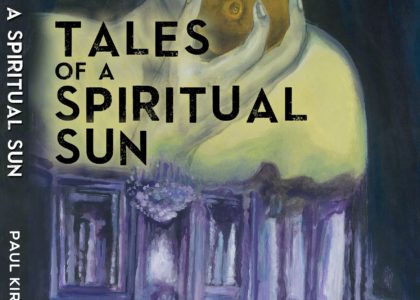
“There is no greater agony than bearing an untold story
inside you.” –Maya Angelou
Creative narrative and storytelling stands
at an evolutionary junction reflecting the gradual emergence of semantic
language, culture, and the social brain . They predate science, property rights,
. They predate science, property rights,
medicine, the consumer societies birthed by the Industrial Revolution, the
religious work ethic, and anything else of worth ever invented by the human
species. More importantly though, they allow for a constellation of individuals
with identical or analogous moral ideals, ethical standards, religious beliefs,
and cosmogonies to interweave, self-organize, and facilitate a context for personal
movement to self-actualization and henceforth serve as collective repositories
for the co-construction and transmission of culture. Desire for subsistence and
inherent meaning is a driving force to be reckoned with, and its sheer value
and aptitude in being able to relegate our perceived differences to the
wastebasket of triviality is reflected in the cross-cultural immanence of oral
and written myth in bygone civilizations and through Hollywood movies,
television serials, genre fiction, and pop magazines in the contemporary
developed world. At the very core of narrative gravity is self-identity (Dennett,
1991); it has occupied and continues to occupy so much subjective mental space
because it is the principal mechanism through which all generations have
recreated thyself. Without a doubt we
come to know conscious and unconscious aspects of the self (Snyder, 1998), our
competences and limitations, our motivations, and our aspirations through
narrative.
Save for reflecting the sociocultural
milieus and encompassing blueprints for behavior, identity, and theoretical
knowledge in all known cultures, narrative probably emerged, in part, as a
mechanism of neural integration and coordination between the dominant and
nondominant hemispheres of the brain (Cozolino, 2010). If this is indeed true,
then a multilevel function of narrative is to facilitate neural connectivity in
the brain, emotional stability, psychological flexibility, and psychosomatic
health. Dan Siegel has much to say about this curious phenomenon. The
integrative neural processes occurring during formative periods of development
occurring during formative periods of development
can be vertical, dorso-ventral, or interhemispheric (Siegel, 2012). The
importance of the latter, according to Trevarthen, cannot be overstated because
the anterior commissures and corpus callosum combined is, “the only pathway
through which the higher functions of perception and cognition, learning and
voluntary motor coordination can be unified (Siegel, 2012, pp. 341).”
Associational neurons in the frontal, temporal, and parietal lobes are the
modus operandi, linking intricate representational processes of the hemispheres
together (Cozolino, 2010).
Concerning the importance of narrative
in interhemispheric coordination, scientific treatises activate only the
digital, temporal processes of the dominant left hemisphere whereas the
combined visual imagery and linear storyline couched within real stories and
fictional tales activate both the aforementioned and the holistic, analogic
processes of the nondominant right hemisphere (Siegel, 2012). In light of this
interdisciplinary schema, it appears that our genetic and neurological
constitution come with in-built “attractions” for higher-order activities (i.e.
reading and listening to stories or creating them) able to activate and hence
or creating them) able to activate and hence
integrate cortical and subcortical processing systems, the hippocampus and
amygdala, and specific regions of the frontal lobes (Rossi, 1993). Moreover, creative
storytelling stimulates denser connectivity between the language centers; the neural
networks dedicated to memory, visceral, and emotional processing; and conscious
awareness (Cozolino, 2010). Albeit unconscious, there’s a reason as to why we
recourse to them when we’re suffering from self-perpetuated patterns of depression,
anxiety, over-emotionality, or a sense of emptiness and meaninglessness in our suboptimal
lives.
Let’s
attempt a substantiation of the abovementioned claim with some palpable
examples from my own personal experience. In the last eight months the rigorous
intellectual demands of gradual school inadvertently lead to the abandonment of
hitherto present artistic endeavours like creating writing, reading novels, writing
poetry, drawing, playing the keyboards, and doing jigsaw puzzles. Before I knew
it I was meandering inside the labyrinth of syllogistic reasoning, cause-effect
relationships, and interpretation, pumping out scholarly papers at an
astronomical rate. Although unconscious of it at first, the biases patterns of
left-right activation began cropping up in my subjective conscious experience
began cropping up in my subjective conscious experience
as irritation, agitation, and a slight nervousness. Some basic feelings of emptiness
and desolation associated with this lopsided life orientation were also present.
Something didn’t feel “right” anymore; there was something missing.
Unable to isolate and scrutinize these
at the time, I continued spiralling into a lamentable lapse of discontentment
until my very conscientious and astute psychotherapist reorientated me to the
inner world of images, symbols, and heroic journeys, the same plane the
storytelling process appropriates for the sake of recommencing dialogue between
the value-laden ego and the rich tapestry of archetypal content irrupting from
the unconscious (Snyder, 1997). Done in a context-appropriate manner, my
therapist’s solicitation to create self-narratives in a personal journal by
combining creative storytelling with the writing process occasioned in emancipation
from emotional arousal and stress and increased feelings of exuberance, contentment,
and wellbeing. This creative project evolved into something much more powerful
and profound during Expressive Arts Therapy class, examining existential,
spiritual, and metaphysical themes via the integration three different
modalities–drawing, poetry, and prose. Another more reductive mode of
expressing this would be to say that the creative processes unleashed led to a
readjustment of right-left balance .
.
On a similar note the consensus amongst
neuroscientists is that the corpus callosum, the bundle of nerve fibres interconnecting
and coordinating the two hemispheres, doesn’t reach full maturity until early
teenagehood (Galin, Johnstone, Nakell, & Herron, 1979). From about twelve
onwards, I became fascinated with genre fiction, especially drama, thriller,
and horror, petitioning my parents for books written by Richard Laymon, Dean
Koontz and Stephen King. Being firm believers in education and intellectual
and intellectual
stimulation, they complied with every request and so instead of engaging in
activities more pertinent to my age group (i.e. playing make-believe), I
devoured suspenseful and stimulating narratives from the opulent comfort of my
cerulean-tinted room. By the time I’d reached sixteen I’d read about a hundred
and fifty fiction books. Deliberating on the progression of my own development,
it recently occurred to me that this early passionate and sometimes
pathological fixation with the artificial worlds of genre fiction may have not
been a random epiphenomenon of innate curiosity per se, but a necessary
catalyst for enhanced metabolic activity and right-left neural integration.
A still deeper exploration of cerebral
pathways illuminates narrative and storytelling as the fundamental catalyst of neural integration. In circumstances where
an individual is relaxed and composed, affective processes mediated by dense bidirectional
connections between the orbitomedial prefrontal cortex, amygdala, anterior
cingulate, and right hemisphere are encumbered, manifesting as the direction of
focal awareness to stimuli of the external environment. This connotes increased
prosocial behavior and contentment, for the most part. Psychological stress, anxiety,
and negative affect are detrimental because they increase levels of cortisol in
the bloodstream, activating the amygdala’s fight-flight-or-freeze response which
leads to inhibition of the cortical networks (specifically the orbitomedial
cortex) regulating bottom-up survival processes like emotions, drives, impulses,
and so forth (Kern et al., 2008). When the amygdala is allowed to disrupt
homeostatic balance of emotional arousal and focal attention over sustained
periods of time, symptoms of depression and psychotic features may arise (Cozolino,
2010).
Gradually, the mutual effects of
antisocial behavior and atypical intrusions into conscious awareness from
deviant, invasive, and ego-dystonic voices breed fallacious interpretations
known as delusions which disconnect the individual from consensus reality. Now
our phylogenetic history shows that perceived detriments connected with impositions
of primary process thinking and implicit memory from the right hemisphere do
not outweigh the benefits, otherwise natural selection would have propelled it
the way of the dinosaurs some time ago. Whatever the reasons for evolutionary
retainment, the former permit direct access to archetypal contents and mythic
images from whence a more resilient contextual self may be wrought and a more goal-directed
movement to self-definition cognized (Snyder, 1997). More and more, it seems as
though narrative and creative storytelling activate a particular pattern of dynamic
unconscious processes able to yield all-powerful revelation from archetypal content
saturation in the subjective mental sphere, and reintegration of left-right
processing systems after their provisional dissociation in the more objective
neural sphere. Based on the aforesaid theoretical and experimental research, one
should surmise that narrative is an extremely compelling form of expressive
arts therapy and can be applied as an adjunct to a miscellaneous range of
clinical populations.
Creative storytelling and writing can
be applied to a wide array of clinical populations, including individuals
suffering from anxiety and depression, bipolar disorder, and psychosis
(Mehl-Madrona, 2010). Anxious and depressed people suffering from emotional
dysregulation would best benefit if we first identify their underlying
psychological trigger and then co-create a narrative that transforms the
perceived nature of the stressor from arbitrary and detrimental to essential
and temporary, imbuing the client’s life with richness, empowerment, and
meaning. For a depressed parent who has lost her only child, for instance, we
might suggest co-creation of a memorial project binding together the latter’s stories,
milestones, and interests into a personal myth that places an otherwise
nonsensical participatory event into a meaningful context. Similarly, a bipolar
sufferer who is demotivated and depressed and won’t leave the house can be
inspired with the co-creation of narratives whereby the detrimental voices and
characters pervading the inner world can be made conscious, dialogued with, and
transformed into less maladaptive, irrational, and self-defeating ones. On the
other hand a psychotic self can build meaningful stories around its aberrant,
disturbing, and ego-dystonic experiences for how to better function in
consensus reality. A belief that aliens are inserting microchips into one’s
cerebral cortex or that aliens have bugged one’s house might be therapeutically
countered through the active co-creation of stories in which aliens have either
become trapped in another dimension or forgotten how to reach Planet Earth.
Perhaps the most important ethical
consideration when applying creative storytelling in psychotherapy is the
characterological disposition of the client herself. One cannot truly benefit
from creative-oriented endeavors when self-perception is riddled by serious
doubt and uncertainty surrounding the ability to deploy imagination, to
actively create and recreate in the service of valuated action and goal
attainment, and to express the landscapes of the inner world. Some individuals
just aren’t open to working with the imaginal plane. Another caveat for the
expressive arts therapist concerns the client’s familiarity with the approach
itself; individuals schooled in the arts, particularly in creating fiction, may
really struggle with spontaneous expression because entrenched deep in their
cognitive machinery is the belief that the emergent creative product must
adhere to learned techniques and conventions. As we know setting concrete rules
and boundaries encumbers the teleological propensities of process work. Hence
the modality may not be nearly as effective when it constitutes one’s
profession.
In cases where narrative is a
co-creation between the therapist and client, the former should always be
mindful of the latter’s participatory level with mythological, folkloristic,
and idiosyncratic aspects of their own culture. Therapy can go a little awry,
resulting in annihilation of the dyadic container of safety and trust if the
therapist unwittingly recourses to certain symbols, images, and leitmotifs which
are taboo and carry negative intimations and undertones. Similarly, the
therapist should remain ‘sensitized’ to contextual information because the
unconscious irruptions facilitated through these techniques may in fact be
proto-scripts for premeditated actions like suicide attempts, homicide, and
other malicious behaviors. There’s nothing more lamentable than feeding the
fantasies of a criminal or psychopath with homicidal impulses. Over and above
all, the approach must be self-directed, meaning that it must somehow be
congruent with the client’s own needs and objectives as they stand in the
present moment. Phenomenological experience seems to be the best yardstick in
ascertaining whether or not creative storytelling is a viable medium for
personal transformation; therapists know they’re on the right path when their
clients utilize the imaginative process to actively and fluently connect with
hitherto untapped aspects of their own selves in reparative ways.
On reflection creative storytelling is
a universal phenomenon, transcending epoch, place, sex, religious and spiritual
orientation, and sociocultural milieu. Long before the emergence of semantic
language, our ancestors congregated about fireplaces to listen to engaging
narratives about mass migration, the far-reaching consequences of the world
flood, and the seemingly insurmountable quest of a heroic ancestor to undermine
the forces of evil. Their pre-eminence in our phylogenetic history is
explicable within both cultural and neural contexts: they contribute to the
co-construction and transmission of culture from generation to generation
whilst concurrently fashioning and maintaining sophisticated integration of
left-right hemisphere and cortical-subcortical neural circuitry (Rossi, 1993). Narratives
ground our experience in ways that allow for goal-directed action and
progression to self-definition; they link our individual selves into a group
mind like beaded pearls of a beautiful necklace; and they support the
complexity and self-organization of brain function.
Because the therapeutic and cathartic
qualities of creative narrative are neither arcane nor empirically sketchy, a psychotherapist
who deems themselves competent, conscientious, and versatile would do well to
apply them in the treatment of numerous clinical populations including the
anxious and depressed, the manic depressive, and the psychotic. Certainly there
are important caveats to be heeded when one meanders along that path.
Therapists troubled by the question of whether to ‘story or not to story’
should look to the phenomenology of experience for their answer: a client’s receptivity
to the imaginal world and willingness to create proactively in the service of
self-definition and personal identity are two of the best measures in
determining whether the approach will be efficacious or not. We are more than just
a bundle of psychobiological compulsions strung together by habit, we are our
therapeutic narratives. Nonetheless, we must own and become them if we are to
heal.
Bibliography
Cozolino,
L. (2010). The Neuroscience of
psychotherapy: Healing the social brain (Norton Series on Interpersonal
Neurobiology). WW Norton & Company.
Dennett,
D. C.(1991) Consciousness explained.
Boston: Little, Brown.
Galin,
D., Johnstone, J., Nakell, L., & Herron, J. (1979). Development of the
capacity for tactile information transfer between hemispheres in normal
children. Science, 204(4399), 1330-1332.
Kern, S., Oakes, T. R., Stone, C. K., McAuliff,
E. M., Kirschbaum, C., & Davidson, R. J. (2008). Glucose metabolic changes
in the prefrontal cortex are associated with HPA axis response to a
psychosocial stressor. Psychoneuroendocrinology, 33(4), 517-529.
Mehl-Madrona, L. (2010). Healing the mind through the power
of story: the promise of narrative psychiatry. Inner Traditions/Bear &
Co.
Rossi, E. L. (1993). The psychobiology of mind-body
healing: New concepts of therapeutic hypnosis. WW Norton & Company.
Siegel, D. J. (2012). The developing mind: How
relationships and the brain interact to shape who we are. Guilford Press.









